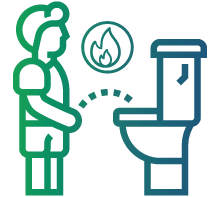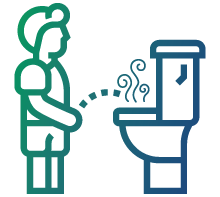
Urine Culture Test
About urine culture test
A urine culture test is a routine lab test that checks a urine sample for the presence of germs like bacteria, yeast, and other microbes that cause urinary tract infection (UTI). Urine contains low levels of microbes which travel from the skin to the urinary tract where they grow and multiply, causing a UTI. Kidneys filter the blood to make urine, it flows from the kidneys to the bladder through two thin tubes of muscle called ureters and the urine is stored in the bladder.
Functions of kidneys
· Removes extra fluid and waste from body
· Removes acid produced by the cells of body
· Maintains healthy balance of minerals, water and salts in the body
· Controls blood pressure
· Makes red blood cells
· Keeps bones healthy
Urine culture testing is commonly used to diagnose urinary tract infections. UTIs usually start in the bladder and can spread to the kidneys or prostate. This test is recommended for identifying the specific bacteria or yeast causing an infection and enables further testing to determine the type of most effective treatment for the infection
Symptoms of Kidney Problems

Frequent urge to urinate

Pain or burning sensation during urination

Cloudy, strong-smelling urine

Lower back and or abdominal pain

Fever
How is the urine culture test performed?
The urine for the urine culture is collected in different ways such as:
Clean catch
-
First wash your hands and clean your genitalia with a cleanser. Then begin urinating into a sterile cup provided by the doctor, which is then sent to the laboratory for analysis. This is the commonly used sample collection method in adults
Urinary collection bag:
-
This method is commonly used with children and infants. For this, a plastic bag is attached to the child’s genitalia with adhesive. When the child begins urinating, the bag catches the urine, which is then sent to a lab for analysis
Catheter:
-
Sometimes, a healthcare provider needs to collect a urine sample with a catheter. A sample of urine is taken by inserting a catheter, which is a thin rubber tube, through the urethra into the bladder. The urine is then drained into a sterile container and the catheter is removed.
Suprapubic aspiration:
-
Rarely, a healthcare provider may need to collect a urine sample from the bladder with a needle. This procedure is known as a suprapubic aspiration, it is used if previous attempts of collecting an uncontaminated sample have been unsuccessful
Who should get a urine culture test?
A urine culture test is recommended for adults who get frequent or hard to treat UTIs. UTIs can affect all genders, but women are more commonly affected than men. Risk factors for frequent UTIs include:

Diabetes

Frequent intercourse (sexual relations)

Kidney diseases such as kidney stones

Problems emptying the bladder completely

Weakened immune system due to autoimmune disorders, organ transplant or cancer treatments
Preparation for test
Some antibiotics can affect the test results so make sure your doctor is aware of any antibiotics that you have taken before the test. Your doctor may ask you to:
· Avoid peeing at least an hour before giving a urine sample.
· Drink water before the sample collection to ensure there is enough urine for testing.
· Collect the first urine for sample after waking up in the morning.
Interpretation of the Test Results
Positive urine culture test result
If you have a positive result for urine culture test, it means that bacteria or yeast were found in your urine sample. This suggests that you likely have a urinary tract infection or bladder infection. Most UTIs are caused by E. coli, which is often found in your stool. Other bacteria that cause UTIs include Staphylococcus and Proteus.
Negative urine culture test result
If you have a negative result for urine culture test, it means that no bacteria or yeast were found in your urine sample. This means that you don’t have a UTI. The range for normal test results differs between laboratories. If symptoms like painful urination (dysuria) or blood in the urine (hematuria) persist, your doctor may order other tests, rarely these symptoms may indicate bladder cancer.
FAQs
What are the risks involved in a urine culture test?
This test involves no risk when the sample is collected using “clean catch method”. You may experience discomfort if your doctor uses a catheter for sample collection and there is a very small risk for a hole (perforation) in the urethra or bladder
What is the turnaround time (TAT) for the results of a urine culture test?
It may take up to 3 days for the lab to complete the analysis of the urine culture test and send back the results
Is urine culture testing important during pregnancy?
If you are pregnant, your doctor will recommend you do a urine culture at several points during your pregnancy as a precautionary measure. If you have developed a UTI during your pregnancy, it is important to catch it and treat it. UTIs are common in pregnancy and untreated UTIs may cause premature labor or poor labor outcomes
Are the test results always accurate?
Test results are not always accurate. You may get a false-negative urine culture test result if you have been taking antibiotics or you may get a false-positive test result if the urine sample has been contaminated with bacteria normally found on the skin
What should you do if you have a positive urine culture test result?
A positive urine culture test result could mean you have a UTI. Your doctor will prescribe the appropriate antibiotics based on bacteria found in your sample, your medical history, and whether your UTI has been recurrent or not. You will be advised to drink plenty of water and urinate frequently

